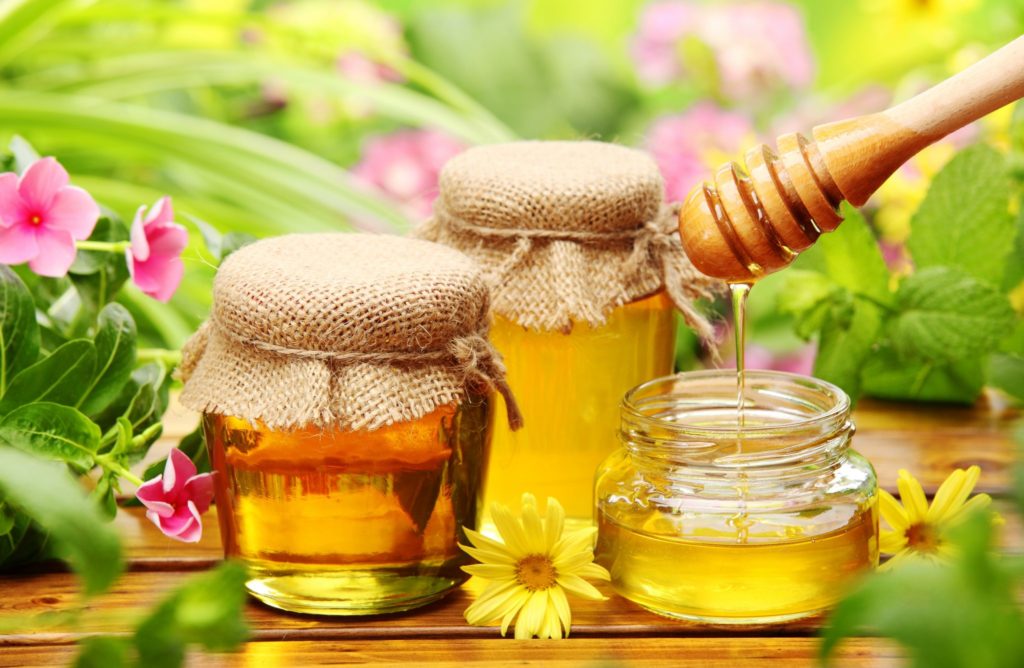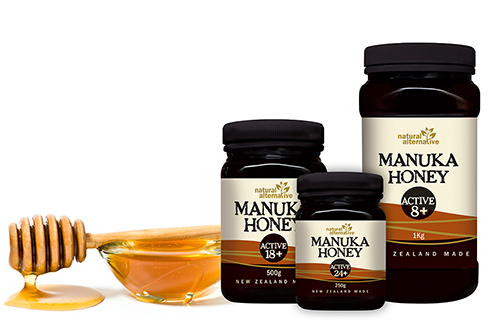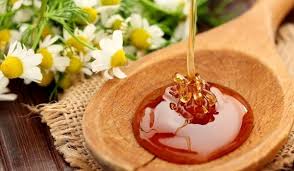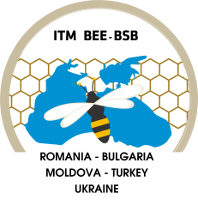Honey: Health Benefits

Honey has been used by countless peoples around the world for the past 2,500 years.
Different types of honey have different health benefits.
But did you know that even if extracted from the same flower in the same place, the taste may be different?
This is due to the difference in temperature or precipitation level. Also, lighter honey is usually softer in taste Let’s look at the different types of honey and their health benefits:
Which honey is most useful?
Acacia honey

Acacia honey is one of the most popular types of honey..
It is light and clear honey, it takes on a delicate floral flavor from the nectar of the flowers of Robinia pseudo acacia.
The high concentration of fructose helps acacia honey to retain its liquid state for a long time.
Its low sucrose content makes it widely popular among diabetics and as a rich source of anti-inflammatory properties and is best suited for the treatment of respiratory disorders.
Mann honey

It is made from the juice produced by aphids on the bark of beech and oak trees.
Beech wood honey is widely used as a syrup for pancakes and fruit salads due to its aromatic properties..
It is also known that regular consumption improves the body’s immunity, improves the digestive system and is often used as a popular supplement due to its high nutritional value.
Linden honey

Linden honey has a very delicate and fresh woody aroma..
One of the richest health benefits, linden honey is a favorite for many before bed.
Its sedative properties help greatly in cases of anxiety and insomnia.
Linden honey is used to treat colds, coughs and bronchitis.
Manuka honey

It is most often harvested in the coastal areas of New Zealand, manuka honey is collected from the flower of the tea tree bush.
It consists of rich antibacterial properties, which helps to effectively treat stomach ulcers, sore throats, colds, indigestion and acne and pimples, among others.
Herbal honey

This is an explosion of taste and health benefits..
The color and taste vary considerably depending on the sources of nectar, but are most often fruity and light.
The health benefits of this variety are also great, but above all are the main antioxidant and cough suppressant effects associated with most types of honey.
However, there is one benefit specific to wildflower honey; many believe that its consumption is a good way to combat localized seasonal allergies, often provoked by the wild flowers from which honey is extracted.
Health benefits of honey
What makes honey so popular? Most likely, this is the ease with which it can be consumed. It can be eaten directly, put on bread as jam, to be with mix with juice or a drink instead of sugar or mix with warm water, lemon juice, cinnamon and other herbs to make medicine.
1. Helps with allergies
Due to the anti-inflammatory properties of honey, it can help reduce allergic symptoms.
It acts as a natural vaccine because it contains small amounts of pollen.
If you suffer from different types of allergies, once your body receives pollen, it will produce antibodies, which means that your body will build protection against this allergy over time.
It is important to consume honey that is from your local area, as this is the honey that will contain pollen spores from local flowers.
Keep in mind that you need to start taking honey two to three months before the allergy season to give your body time to build that immunity.
2. For weight loss
Studies show a link between honey consumption and weight loss.
A study at San Diego State University found that replacing sugar with honey can actually help prevent weight loss as well as lower blood sugar.
The results also show that honey can lower serum triglycerides compared to sugar.
Another study from the University of Wyoming found that honey can activate hormones that suppress appetite.
3. Natural source of energy
Raw honey contains natural sugars (80%), water (18%) and minerals, vitamins, pollen and protein (2%). Not surprisingly, honey is called the “perfect fuel.” It provides easy absorption of energy in the form of glycogen by the liver, making it ideal for vigorous morning workouts and as a source of energy before and after a workout.
Studies at the University of Memphis have shown that honey is one of the best choices of carbohydrates to consume just before exercise. In addition, studies reveal that as a sports fuel, honey is converted to glucose.
When it comes to the use of raw honey for training , raw honey is highly recommended for both refueling and recovery. That’s why raw honey is included in some of the best pre-workout foods, snacks and post-workout.
4. Strong antioxidant
Studies show that a daily dose of raw honey increases the levels of antioxidants that stimulate health in the body. Antioxidants help block free radicals in the body that cause disease. It also stimulates the immune system, acting as a preventive food against any debilitating diseases. Honey contains polyphenols, which are powerful antioxidants that have been shown to reduce the risk of heart disease and cancer. .
Studies show that honey contains antioxidant flavonoids that fight disease, pinocerbrin, pinostrobin and chrysin.
5. In case of sleep problem
Raw honey helps sleep in two ways. By consuming honey at bedtime, it restores the supply of glycogen to the liver and prevents the brain from triggering a crisis search for fuel that can wake you up. Secondly, eating raw honey helps the release of melatonin in the brain by creating a small jump in insulin levels, which stimulates the release of tryptophan in the brain. Tryptophan is converted to serotonin, which is then converted to melatonin.
6. Helps with wounds and ulcers
Copper infusion bandages are known to aid healing. Peter Charles Molan of the University of Waikito, New Zealand, has found in numerous pieces of evidence that honey is a natural antibacterial food with wound healing effects . He also found that honey reacts with body fluids to make hydrogen peroxide, creating an unsaturated environment for bacteria.
For the treatment of burns and wounds, honey is usually applied directly to the problem area or with a bandage that is changed every 24 to 48 hours. Sometimes the bandage stays in place for up to 25 days.
Honey has been studied for its use in the effective treatment of various types of ulcers. Honey can reduce the size, pain and odor of problematic skin ulcers.
7. In diabetes
Consumption of raw honey can reduce the risk of developing diabetes and help with the medications used to treat diabetes. The combination of raw honey and cinnamon can be especially helpful for healthy blood sugar management, as well as many other health problems such as gingivitis and acne.
8. Natural cough syrup
Raw honey has been shown to be as effective in treating coughs as the cough syrups on the market. The increase in scientific data shows that a dose of honey can reduce the secretion of mucus and cough. In one study, honey was just as effective as diphenhydramine and dextromethorphan, common ingredients found in cough medicines.
For coughs, half a teaspoon to two tablespoons of honey at bedtime is tested and the recommended dose for anyone over 1 year of age.
9. Skin care with milk and honey
Milk and honey are often served together, as both of these ingredients help create smooth, beautiful skin. Consuming this combination every morning is common practice in many countries for this reason..
10. Helps with dandruff
The researchers have found that when you apply a dilute solution of honey and water to your scalp and leave it on for a few hours, your scalp will return to its healthy function.
Honey works so well with scalp problems due to its antifungal, anti-inflammatory, and antibacterial properties.
11. Helps with abrasions and burns
Due to its natural antibiotic nature, honey can help soothe and heal wounds and burns.
Just apply honey and this will help disinfect the wound from some serious bacteria such as methicillin-resistant Staphylococcus aureus (MRSA).
12. Helps with herpes
The honey can help with the symptoms of herpes, because if applied to wounds, it draws fluid from them.
In addition, because honey has a high sugar value, it keeps the growth of microorganisms to a minimum.
Bee nectar includes the enzyme glucose oxidase, which helps when honey is applied to your wound because a small amount of hydrogen peroxide is released.
13. Strengthens the immune system
The immune system is very important for good health as it eliminates diseases.
The regular consumption of honey can give a great boost to your immune system, as it has antibacterial and antioxidant properties.
It can also help cleanse and build the digestive system, which is essential for optimal health.
14. Helps fight cancer
The honey is another food that can help prevent or fight cancer , as it has anti-carcinogenic properties and can help fight the growth of existing tumors.
Honey has excellent flavonoids and phenolic compounds that make it a superfood and give it antimetastatic properties that can fight tumors and cancer.
15. Helps with acne
The honey contains moisturizers that moisturize your skin and have the ability to kill the bacteria that causes acne. There are several ways you can use honey to reduce acne .
A great way to fight acne is to apply raw, unprocessed honey to areas of the body that are prone to it; These areas are usually the face, chest or back.
Leave the honey for about 30 minutes and rinse with warm water. Another great recipe is to add cinnamon to honey and apply it to the affected area or ingest it daily.
16. In case of sinus problems
The honey can help with a sinus problem. Just start taking ½ up to 1 teaspoon of honey every day or night before bed and within a few months and you may notice a reduction in the symptoms associated with inflamed sinuses.
17. Helps with cholesterol
Cholesterol is needed in the body to help you digest fat, but too much of it is not good for your health.
Health experts recommend taking about 1000 mg of cholesterol a day. Honey has been shown to help fight high cholesterol.
18. Honey and cinnamon
According to ancient healing practices, honey and cinnamon can cure most diseases. They are effective in weight loss, acne, bladder infections and in treating many more diseases.
Both ingredients can be used internally in the form of juice or tea or externally applied in the form of a paste or mask, depending on the problem.
The mixture of honey and cinnamon has many advantages and can cure many diseases.
Data on honey nutrition
Honey is one of the purest foods in nature and is much more than a natural sweetener.
This is a “functional food”, which means that it is a natural food with health benefits. Eating honey is impressive. Raw honey contains 22 amino acids, 27 minerals and 5,000 enzymes. Minerals include iron, zinc, potassium, calcium, phosphorus, magnesium and selenium. The vitamins found in honey include vitamin B6, thiamine, riboflavin, pantothenic acid and niacin.
In addition, nutritional supplements contained in honey help to neutralize the harmful activities of free radicals.
One tablespoon of honey contains 64 calories , but there is a healthy glycemic load of about 10 per tablespoon, which is slightly less than a banana
Honey is usually about 18% water, but the lower the water content, the better the quality of the honey.
The best thing is that honey does not need special storage or cooling – use it on a spoon straight from the jar.



